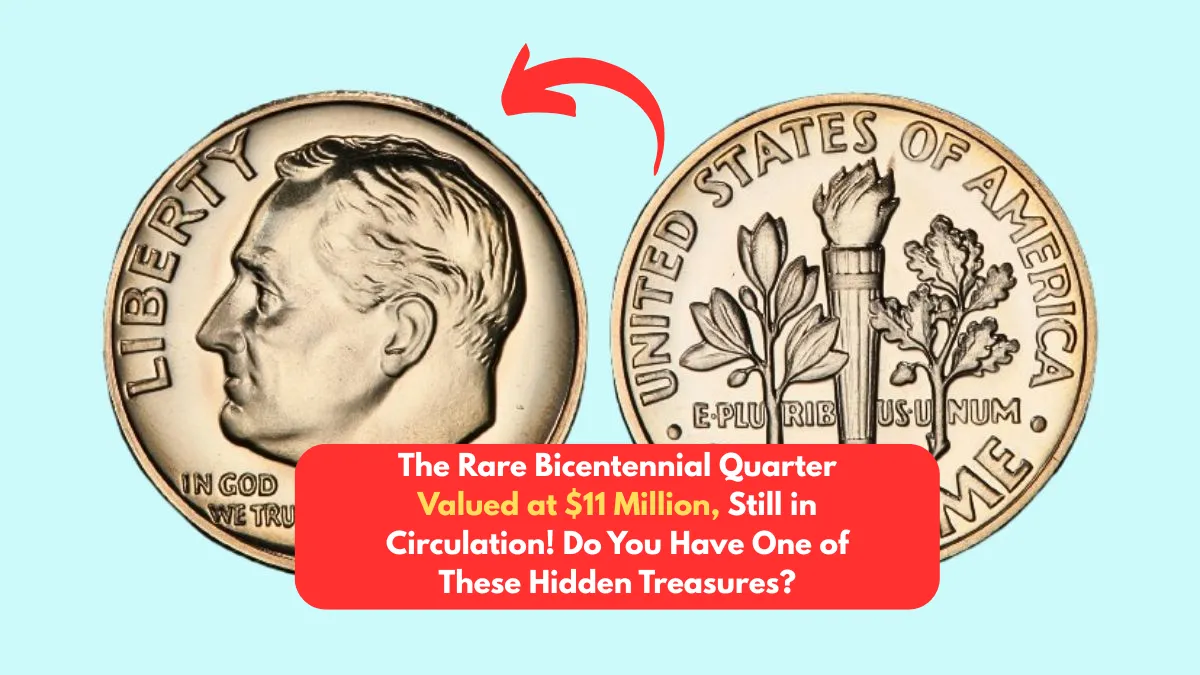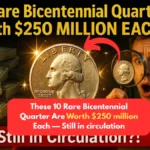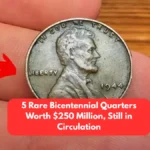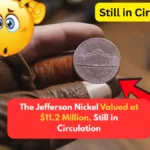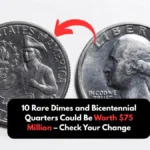In the world of coin collecting, surprises can show up in the most ordinary places—like your pocket change. One such extraordinary surprise is a rare Bicentennial Quarter that’s reportedly valued at an astonishing $11 million. While it may seem hard to believe that a 25-cent coin could be worth millions, the truth is, certain rare variations of the 1976 Bicentennial Quarter are considered numismatic treasures, and a few are still in circulation today.
What Is the Bicentennial Quarter?
In honor of the 200th anniversary of American independence, the United States Mint produced special quarters during 1975 and 1976, commonly known as Bicentennial Quarters. These commemorative coins feature a few distinct elements that set them apart from standard quarters. They display the dual year “1776–1976” beneath George Washington’s profile instead of the usual single year.
The reverse of the coin showcases a colonial drummer accompanied by a victory torch and encircled by 13 stars, symbolizing the original colonies. These coins were minted at three facilities—Philadelphia (no mint mark), Denver (“D”), and San Francisco (“S”). Most of these quarters are not rare and only carry face value. However, a select few with unusual characteristics such as minting mistakes or limited-edition proofs can be worth significantly more—sometimes even reaching incredible values due to their scarcity and collector interest.
Why Is One Bicentennial Quarter Worth $11 Million?
The astonishing $11 million valuation attached to a particular Bicentennial Quarter is not due to its age or commemorative design alone—it is likely a result of a rare combination of factors that make it truly unique. Experts believe this extraordinary coin might have been accidentally struck on the wrong metal planchet, possibly one made of silver or a foreign alloy.
It is also believed to be in perfect condition, with a grading of MS-70 or a flawless Proof 70 Deep Cameo. Further increasing its rarity is the possibility of double striking or usage of experimental dies during minting. Its extreme rarity, perhaps being the only one of its kind, significantly drives its value. When such a coin is presented, private collectors or museums may be willing to pay virtually any amount to add it to their collection, which explains the multimillion-dollar price tag.
How to Tell If You Have the $11 Million Quarter
If you’re wondering whether your Bicentennial Quarter might be one of the rare valuable ones, there are several specific characteristics you can examine. First, check the date and reverse image—it should show “1776–1976” and the design of a colonial drummer. Next, inspect the coin for minting errors such as a double die (where details appear duplicated), off-center images, die cracks, or incomplete printing.
You should also verify its metal content; regular quarters are made of copper-nickel, while the silver versions contain 40% silver, increasing their worth. Rare misstrikes might even be made from pure silver or another unusual metal, making them incredibly valuable. Conducting a weight test—regular quarters weigh 5.67 grams, while silver ones are slightly heavier—and a magnet test can provide clues, as silver and copper are non-magnetic. Finally, evaluate the coin’s surface; if it has sharp, mirror-like detail and comes from a proof set (typically with an “S” mint mark), it might be a valuable deep cameo proof.
Other Valuable Bicentennial Quarters to Look For
Although the $11 million Bicentennial Quarter is most likely a unique example, there are several other types of valuable Bicentennial Quarters that collectors actively seek. For instance, a 1976-S Silver Proof coin graded PR70 with deep cameo qualities can fetch between $5,000 and $15,000. A 1976-D quarter with a double die on the obverse may sell for $1,000 to $3,000 depending on its condition.
Off-center strike errors from 1976 might be worth $500 to $2,500 or more. Additionally, the 1976-S Silver Uncirculated Coin is valued at around $200 to $500, and a quarter with a clipped planchet error could sell for anywhere from $250 to over $1,000. These high prices depend on the rarity, condition, and collector demand for the specific coin variation.
Where to Look for One
You don’t necessarily have to visit a museum or a rare coin dealer to stumble upon one of these valuable Bicentennial Quarters. In fact, these hidden gems can sometimes be discovered in places as ordinary as your kitchen drawer or piggy bank. You might come across a rare find in rolls of coins purchased from your local bank or stashed away in an old coin jar you’ve inherited from a relative.
Estate sales and garage sales often offer old coin collections, and people sometimes overlook the value of what they’re selling. Even your everyday pocket change could be hiding a small fortune. Because many people are unaware of the value of these quarters, it’s entirely possible that rare examples are still in circulation waiting to be discovered.
What to Do If You Think You Have One
If you come across a Bicentennial Quarter that looks different or matches some of the signs mentioned earlier, don’t rush to clean or polish it. Cleaning can damage the coin’s surface and significantly reduce its value. Instead, handle it carefully and use a magnifying glass to look for any unusual features or minting errors. Weighing the coin and checking for magnetism can also provide helpful clues.
The best course of action is to bring the coin to a reputable coin dealer or certified numismatist who can give you a professional opinion. For a more official evaluation, you can submit it to a third-party grading service such as PCGS (Professional Coin Grading Service) or NGC (Numismatic Guaranty Company). If the coin turns out to be extremely rare or valuable, you might consider selling it through established auction houses like Heritage Auctions or Stack’s Bowers to get the best possible return.
Final Thoughts: A Penny for Your Thoughts, a Quarter for Your Fortune?
While most of us tend to overlook the coins jingling in our pockets or lying forgotten in a drawer, the story of the $11 million Bicentennial Quarter is a reminder that extraordinary value can be hidden in plain sight. A simple 25-cent coin, when it features rare errors or unique characteristics, can become a prized possession worth millions.
For coin collectors and everyday people alike, this possibility adds excitement to the ordinary task of sorting through loose change. You never know when you might come across a piece of numismatic history that could change your life. So go ahead—take a closer look at your spare change. That quarter you’ve ignored for years might just be a rare American treasure.
